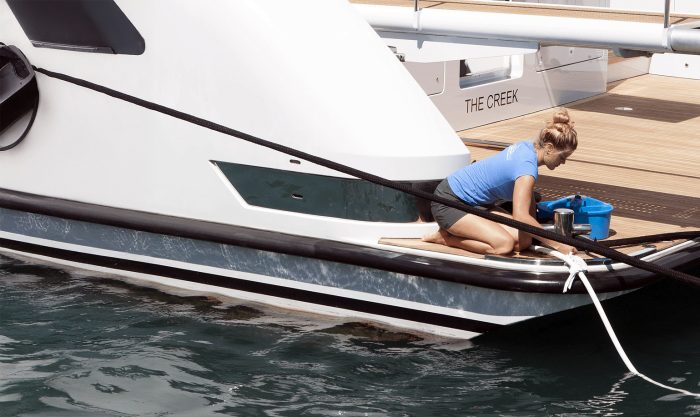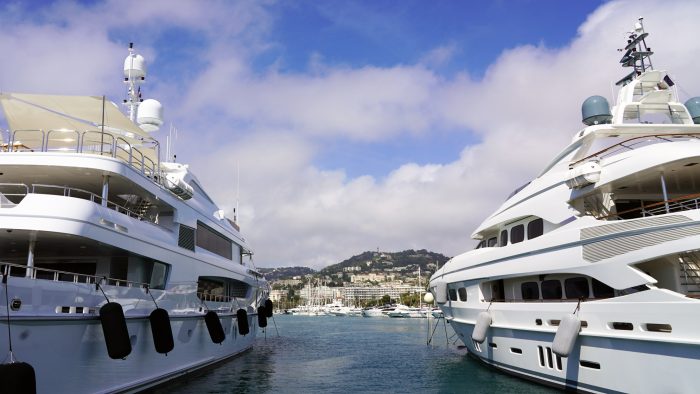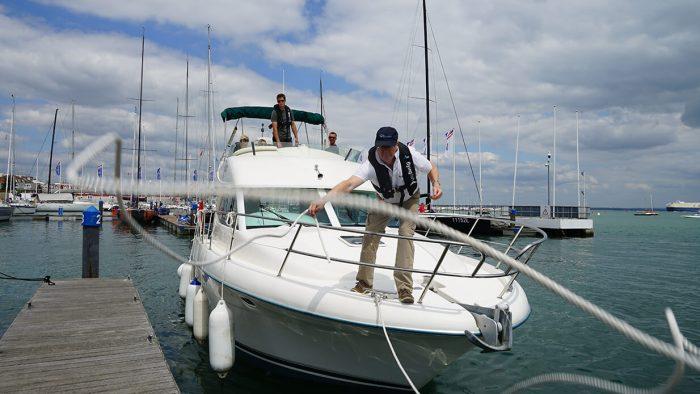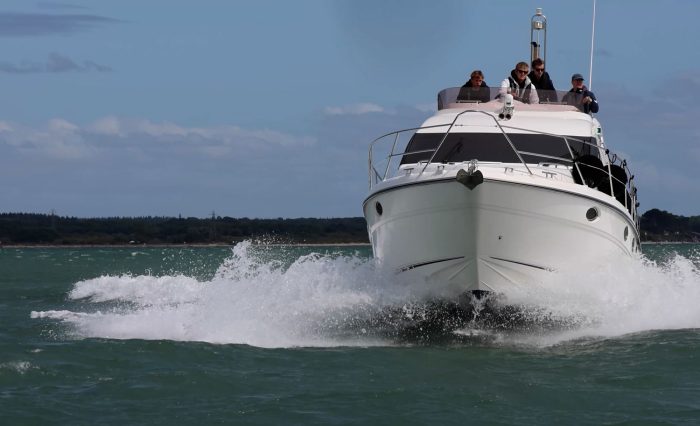You may have come across Superyacht job listings for “Deck/Stew” or “Stew/Deck” positions and wondered what they actually involve. Are you expected to master two completely different jobs? How does it work in practice? And most importantly, could this be your route into the industry?
If you’re new to Superyacht work, dual roles might seem confusing or overwhelming. The reality is quite different: these positions are specifically designed as an entry point for newcomers, offering one of the most practical ways to get your foot in the door of the Superyacht industry. So, to answer the question ‘Can I work as both a Deckhand and Stewardess on a Superyacht?’, the short answer is yes, but we’re going to explore this topic a little deeper than that!
If you’re new to the Superyacht industry and wondering whether you can work both Deck and Interior roles, you’re asking the right question. Dual roles, commonly known as “Deck/Stew” positions (short for Deckhand/Stewardess), are primarily entry-level “green” positions designed for people with little Superyacht career experience, making them an excellent starting point for your career.
This blog is filled with tips from our course instructors Sarah and Colette, who both worked successfully in dual roles before joining our team. Sarah worked as a Stew/Deck with duties weighted towards Stewardess work, while Colette worked as a Deck/Stew focusing primarily on Deck operations. Here’s everything you need to know about combining Deckhand and Stewardess Duties.
What’s involved in a Superyacht dual role?
Dual roles combine the responsibilities of both Deckhand and Interior departments. Rather than specialising in just one area, you’ll split your time between two very different sets of duties.
As a Deckhand, you’ll be responsible for:
- Maintaining the yacht’s exterior through cleaning, painting, sanding, and varnishing
- General maintenance of equipment and deck areas
- Handling dock lines and assisting with anchoring
- Managing water toys like jet skis and tenders
- Assisting guests with water sports activities
- Working in all weather conditions
As a Stewardess, you’ll handle:
- Guest service including meals, drinks, and personal requests
- Housekeeping and laundry for guest cabins and common areas
- Interior cleaning and maintenance to luxury standards
- Table service and presentation
- Anticipating guest needs and ensuring their comfort
- Maintaining discretion and professionalism at all times
These positions typically involve a structured split that’s defined in the job specification.
If the role is advertised as “Deck/Stew,” you’ll probably have more Deckhand duties, whereas “Stew/Deck” positions are weighted towards Stewardess roles.
For example, a Stew/Deck role might be 60% Stewardess duties and 40% Deckhand work.
The exact split also depends on whether guests are onboard: when entertaining guests, you’ll focus primarily on interior service; during guest-free periods, you’ll shift to Deck maintenance and operations.
Should you consider a Deck/Stew position?
Based on our experience training crew and feedback, dual roles suit specific personality types. You’ll thrive in a dual role if you have high energy levels and love variety in your workday.
These positions are perfect for people who get bored easily with repetitive tasks and enjoy learning new skills while facing different challenges.
The ability to adapt quickly between completely different work environments is essential, as is a genuine desire to gain broad industry knowledge as entry-level crew.
However, dual roles might not suit everyone. If you prefer deep specialisation in one area, work best with consistent and routine tasks, or struggle with rapid task-switching and time management, you may find these positions challenging and stressful.
Where you’ll find dual role opportunities
Vessel size matters
Dual roles are most common on yachts of 55 metres and below. Smaller vessels operate with limited crew, requiring everyone to be more versatile. As yacht size increases, crew departments tend to become more specialised.
Private vs charter yachts
Private yachts more commonly offer dual roles compared to charter vessels, though this isn’t a strict rule. Charter yachts can be more demanding due to constant guest rotations, requiring exceptional adaptability.
Daily challenges and what to expect
Time management is critical
The biggest challenge isn’t learning different skills but managing time across departments. You might complete Stewardess duties while the Deck Crew is still working, but you’ll be expected to assist with their tasks. One moment you’re serving guests with white gloves; the next, you’re handling dock lines or maintaining deck equipment.
Uniform changes and physical demands
Switching between roles means constant uniform changes with limited time. You’ll need to transition from heavy deck work to detailed interior service while maintaining professional appearance standards. Expect to get dirty, and be prepared for physical demands!
Department scheduling conflicts
When both departments need you simultaneously, resolution depends on the yacht’s hierarchy. Generally, guest service takes priority, but ultimately the Captain makes final decisions when Heads of Departments disagree.
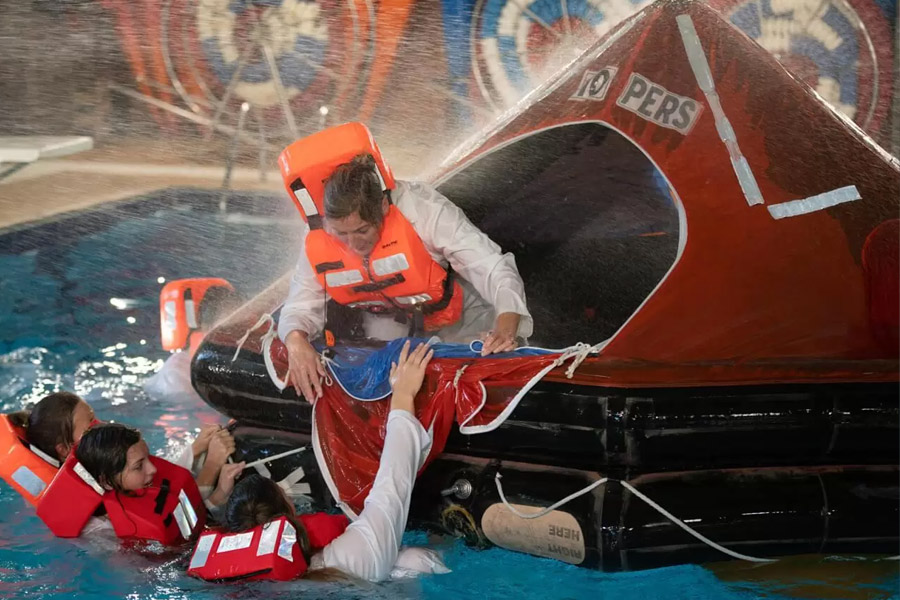
Essential qualifications for dual roles
Before pursuing any superyacht position, you’ll need these mandatory certifications: STCW Basic Safety Training (our 5-day MCA-approved course covers fire fighting, personal survival, first aid, personal safety, and security awareness), an ENG1 Medical Certificate for maritime medical fitness, PBL2 (Personal Boat License) for tender operations, and a VHF Radio License for marine communications.
Additional qualifications that will make you more attractive to employers include Powerboat Level 2 with Commercial Endorsement, Personal Watercraft (Jet Ski) License, PADI Open Water certification, Food Safety and Hygiene Certificate, and wine service qualifications. The more diverse your skill set, the more appealing you’ll be for dual role positions.
Our 3-week Superyacht Deckhand and Stewardess Course covers all the essential qualifications and practical training you need to secure your first dual role position. This comprehensive course gives you hands-on experience in both departments, so you understand what you’re getting into before you step onboard.
Career progression and salary expectations
Same role, same wages
Just because you’ve potentially got the skills to cover 2 roles, it doesn’t mean you’ll get paid twice as much! Dual roles typically pay the same as single-department positions which is around €2,500 – €3,000 per month.
The employment advantage
While wages remain similar, dual-role experience makes you significantly more employable. Understanding both departments makes you valuable for future positions. If a crew member becomes ill or leaves, you can assist either department.
Choosing your specialisation
You cannot progress up the hierarchy as both a Deckhand and Stewardess indefinitely. Most successful crew use dual roles to enter the industry, then specialise in their preferred department. Our career guidance shows that Stewardesses more commonly transition to dual roles, while Deckhands rarely move into interior work.
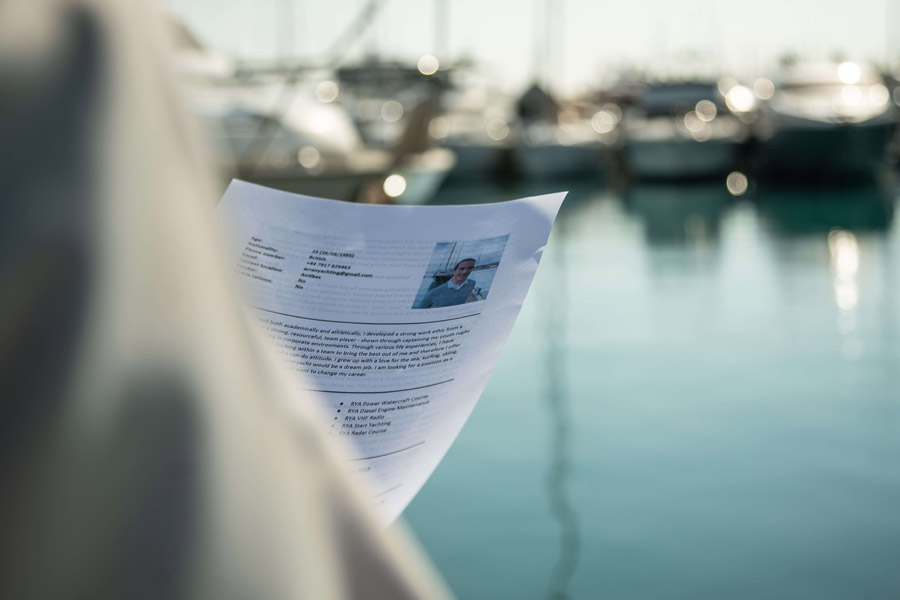
Your CV strategy for dual role success
Creating a CV for dual roles requires careful balance.
The balanced approach
Emphasise adaptability, high energy, and variety-seeking in your opening summary. Include specific examples of switching between different work types and highlight understanding of both departments’ priorities.
When describing experience, separate your CV into ‘Yachting Experience’ and ‘Employment History’ sections. This allows employers to easily focus on what’s most relevant to them, which is vital for dual role positions.
The skills that will make you stand out include customer service and hospitality experience, outdoor work and physical fitness, watersports instruction or PADI certification, bartending and food service skills, mechanical or construction background, and multiple language abilities. These transferable skills demonstrate your versatility and ability to handle the diverse demands of dual role positions.
Your personal profile section
Start by clearly stating what you’re looking for: “I am seeking a position as a Deckhand and Stewardess…” Then list your key qualities backed up by specific experience, explaining why you’re suitable for the dual role.
For more detailed CV writing advice specifically for dual roles, YPI Crew’s comprehensive guide offers additional professional tips from industry recruitment experts.
Red flags vs green flags when job hunting
When job hunting, be wary of positions with job descriptions that lack clear structure about workload division or interviews with blasé attitudes where they simply say “you’ll figure it out.”
Avoid opportunities with no clear reporting hierarchy or unprofessional communication during recruitment, as these often indicate poorly run operations.
Instead, look for employers who can clearly explain the exact workload split percentage, identify who will be your direct line manager, describe how tasks are divided among crew, explain what happens during scheduling conflicts between departments, and demonstrate how the yacht is run professionally and safely.
These questions will help you identify well-managed vessels where you can thrive.
Getting started: your next steps
If dual roles sound appealing, here’s how to begin your superyacht career:
- Get qualified: Complete your STCW Basic Safety Training and other essential certifications
- Consider combined training: Our 3-week Deck and Stew Course gives you STCW plus experience in both departments, which is invaluable when applying for dual roles
- Gain relevant experience: Work in hospitality, outdoor activities, or customer service
- Create a strong CV: Highlight transferable skills and adaptability
- Apply strategically: Target smaller yachts (under 55m) and private vessels
- Be flexible: As entry-level crew, focus on gaining experience rather than being selective
Why choose Flying Fish for your training?
As an MCA-approved training centre, Flying Fish has been preparing crew for superyacht careers since 2001. We deliver STCW and Superyacht Courses every week and have trained over 15,000 students worldwide.
What makes our training different is the practical, hands-on approach. Our 3-week Superyacht Deck and Stew Course is specifically designed for people interested in dual roles. You’ll get real experience working in both departments, understand the challenges firsthand, and graduate with all the qualifications you need.
The course includes all essential certifications in one comprehensive package, practical hands-on training from experienced instructors who’ve worked on superyachts, industry connections and job placement assistance, plus ongoing career support and guidance.
An excellent entry point
For newcomers to the superyacht industry, dual roles are an excellent entry point as they’re specifically designed for green crew with little experience. While it’s hard work to begin with (you’ll need to create CVs for each role and potentially undertake more training courses), it could be a way to find your first job quicker.
You can apply for deckhand positions, stewardess positions, and dual deck/stew roles, effectively tripling your opportunities.
You’ll gain broader industry knowledge, increase future employment opportunities, and discover where your strengths and interests lie.
The key to success? Maintain high standards in both departments, embrace the variety, and use the experience to build a rewarding long-term career in yachting.
Ready to start your superyacht career? Download our free guide to working on superyachts.
Flying Fish is an MCA-approved training centre with over 20 years of experience in superyacht crew training. Our courses meet the highest industry standards and are recognised by captains and crew agencies worldwide.


